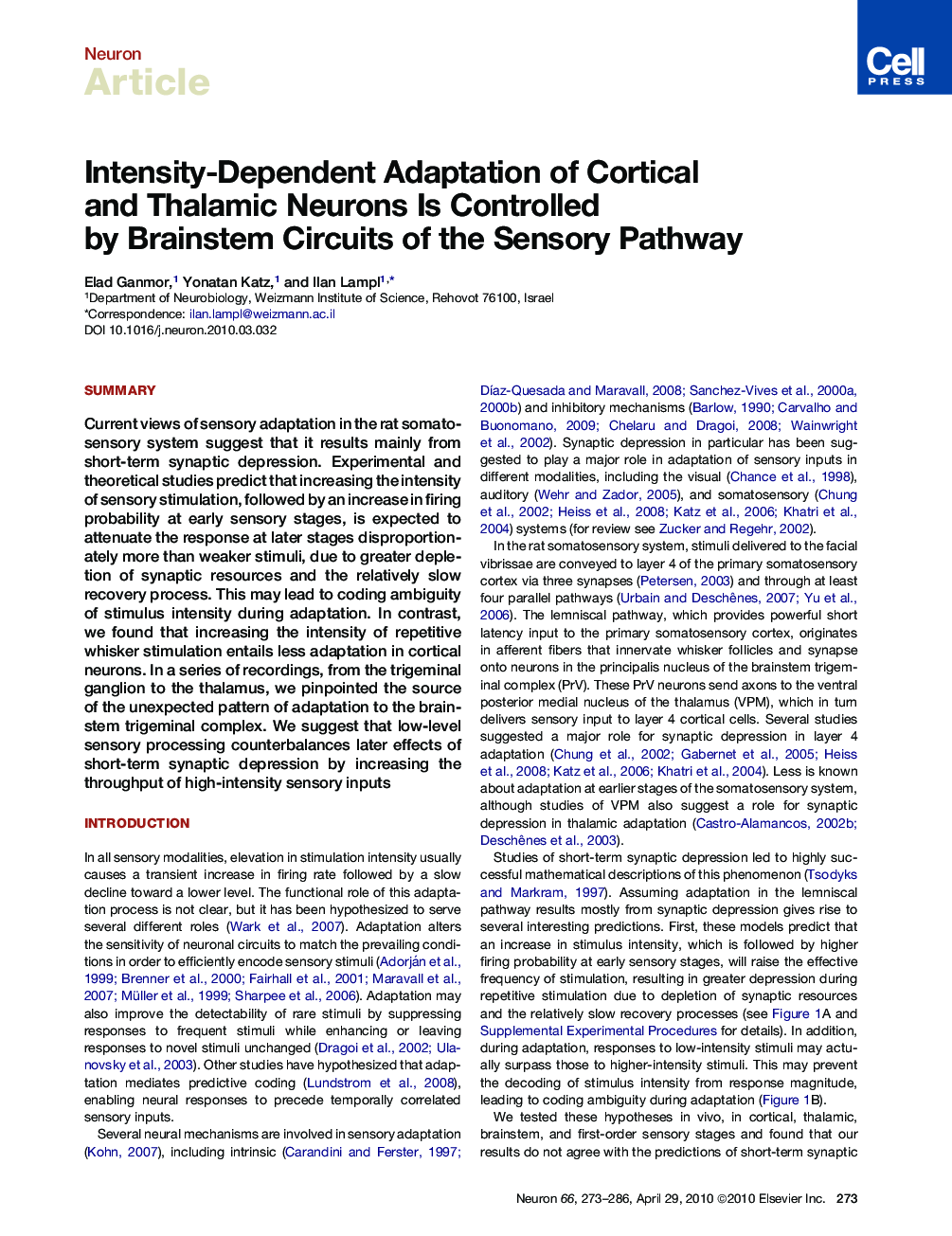| Article ID | Journal | Published Year | Pages | File Type |
|---|---|---|---|---|
| 4322012 | Neuron | 2010 | 14 Pages |
SummaryCurrent views of sensory adaptation in the rat somatosensory system suggest that it results mainly from short-term synaptic depression. Experimental and theoretical studies predict that increasing the intensity of sensory stimulation, followed by an increase in firing probability at early sensory stages, is expected to attenuate the response at later stages disproportionately more than weaker stimuli, due to greater depletion of synaptic resources and the relatively slow recovery process. This may lead to coding ambiguity of stimulus intensity during adaptation. In contrast, we found that increasing the intensity of repetitive whisker stimulation entails less adaptation in cortical neurons. In a series of recordings, from the trigeminal ganglion to the thalamus, we pinpointed the source of the unexpected pattern of adaptation to the brainstem trigeminal complex. We suggest that low-level sensory processing counterbalances later effects of short-term synaptic depression by increasing the throughput of high-intensity sensory inputs
► Synaptic depression models suggest more adaptation for stronger sensory stimuli ► We find that in the whisker pathway strong stimuli adapt less than weaker stimuli ► The observed adaptation behavior cannot be explained by synaptic depression ► Intensity-dependent adaptation originates at the brainstem and may prevent ambiguity
